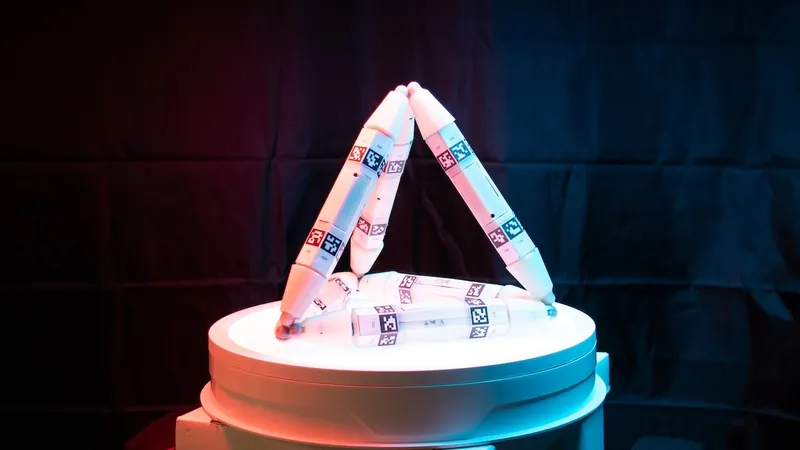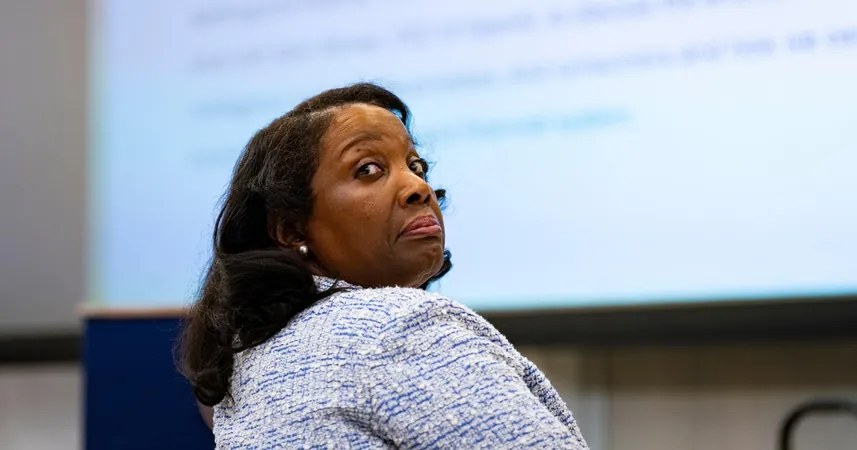
Meet the 'Cannibal' Robot: The Future of Self-Repairing Automation
2025-07-23
Author: Kai
Imagine a robot that doesn't just function but grows, heals, and gets stronger by consuming smaller robots! Researchers have unveiled a groundbreaking prototype that achieves this feat, marking a monumental leap in robotic autonomy.
Dubbed "robot metabolism," this innovative process allows machines to absorb materials from their surroundings or from one another, reusing parts effectively. This exciting development was reported in the journal *Science Advances* on July 16.
Philippe Martin Wyder, the lead author and engineering professor at Columbia University, explained, "True autonomy means robots must not only think for themselves but also physically sustain themselves." Just as living organisms do, these robots can grow and adapt by integrating resources from their environment.
The Mechanics of Growth and Adaptation
Constructed from unique "truss links"—six-sided rods with magnetic connectors—these robots can contract, expand, and even reform into more complex structures. The innovative use of magnets enables them to assemble and disassemble, paving the way for a vision of a self-sustaining robotic ecosystem.
Two essential rules guide this robotic metabolism: each robot must grow independently or with help from similar types, and the only external supplies allowed are materials and energy.
The Evolution of Robotic Structures
In experimental setups, scientists observed how these truss links initially formed flat, 2D shapes before integrating additional components to become a dynamic 3D tetrahedron. This transformation allowed the robot to navigate uneven surfaces more effectively, even using an extra link as a walking stick!
Hod Lipson, co-lead author and mechanical engineering chair at Columbia, remarked, "While robot minds have made incredible strides through machine learning, robot bodies still lack adaptability. Unlike biological organisms that can grow and heal, current robots are rigid and non-recyclable."




 Brasil (PT)
Brasil (PT)
 Canada (EN)
Canada (EN)
 Chile (ES)
Chile (ES)
 Česko (CS)
Česko (CS)
 대한민국 (KO)
대한민국 (KO)
 España (ES)
España (ES)
 France (FR)
France (FR)
 Hong Kong (EN)
Hong Kong (EN)
 Italia (IT)
Italia (IT)
 日本 (JA)
日本 (JA)
 Magyarország (HU)
Magyarország (HU)
 Norge (NO)
Norge (NO)
 Polska (PL)
Polska (PL)
 Schweiz (DE)
Schweiz (DE)
 Singapore (EN)
Singapore (EN)
 Sverige (SV)
Sverige (SV)
 Suomi (FI)
Suomi (FI)
 Türkiye (TR)
Türkiye (TR)
 الإمارات العربية المتحدة (AR)
الإمارات العربية المتحدة (AR)